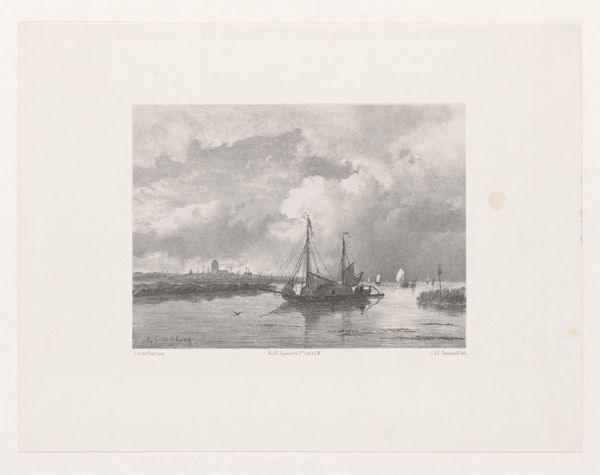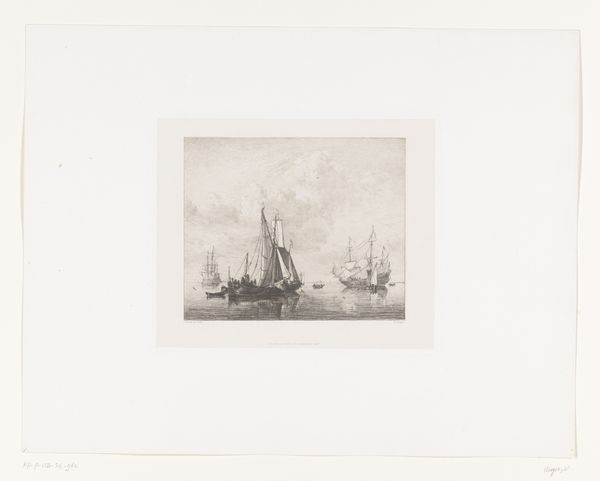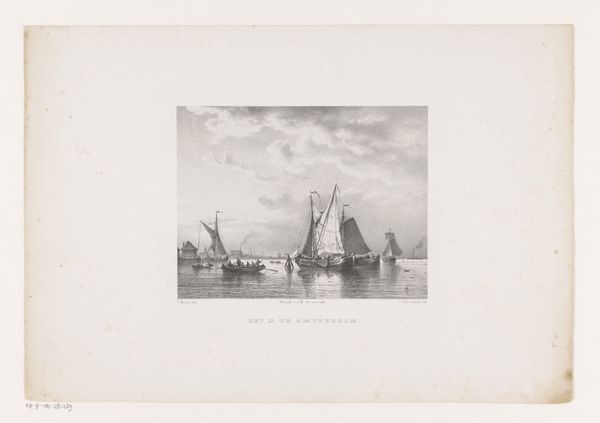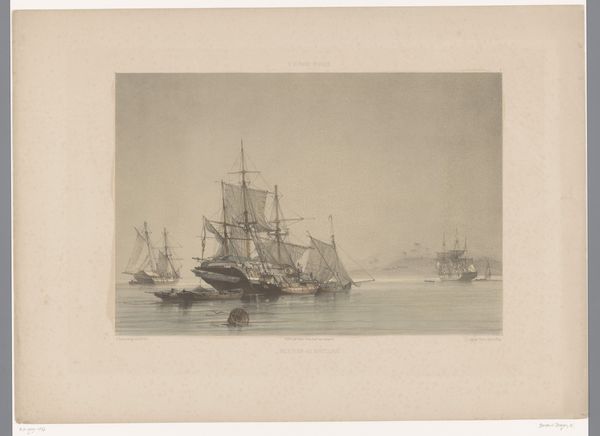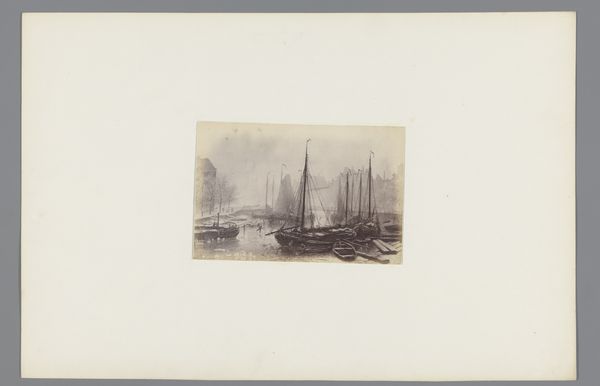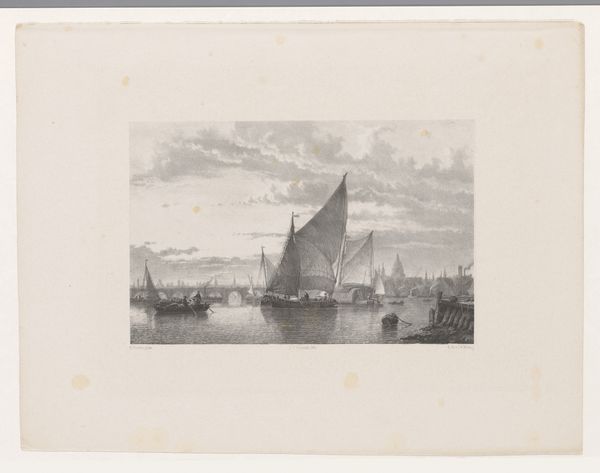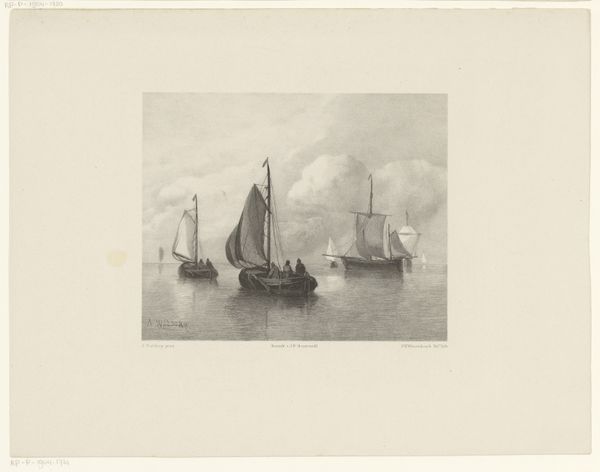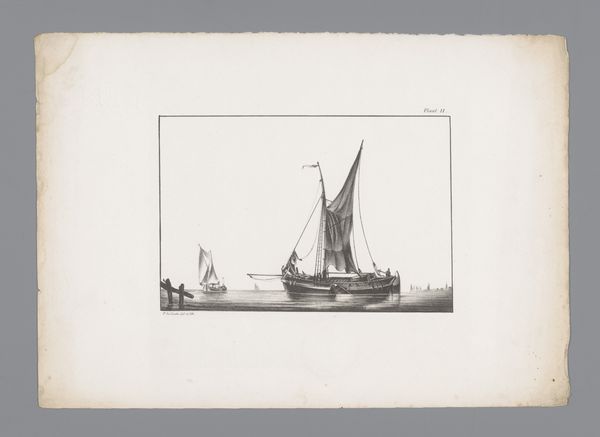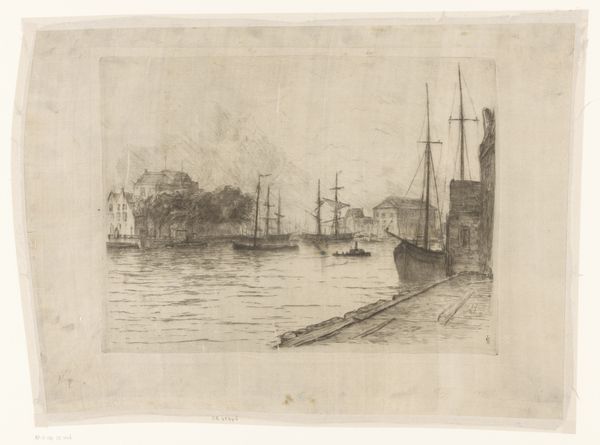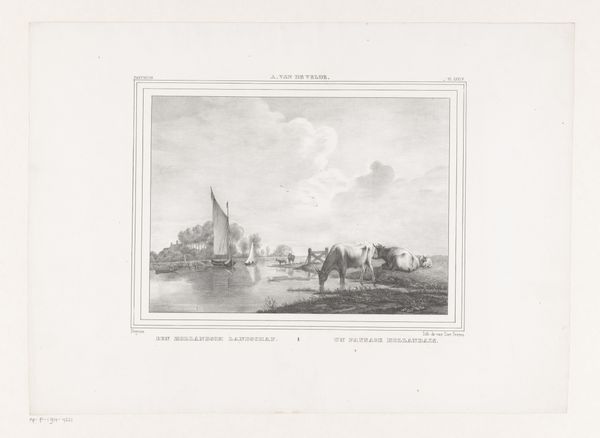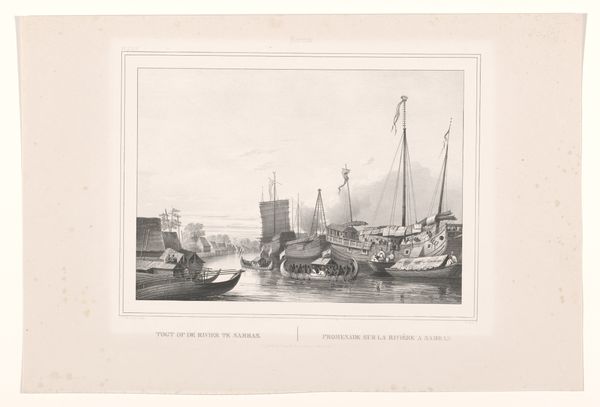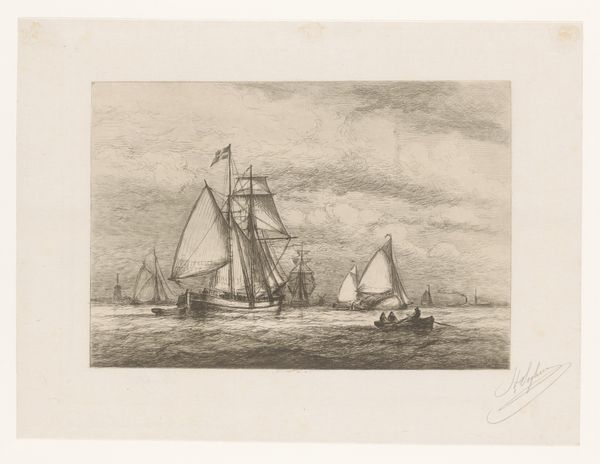
print, etching, paper
#
ink paper printed
# print
#
etching
#
landscape
#
paper
#
watercolour illustration
#
genre-painting
#
realism
Dimensions: height 319 mm, width 473 mm
Copyright: Rijks Museum: Open Domain
Curator: Here we have "Boats on the Beach and in the Harbor," a print made between 1847 and 1865 by Petrus Paulus Schiedges. It's a wonderfully evocative scene. Editor: My first impression is one of somber tranquility. The monochrome palette enhances the mood; it almost feels like looking at a faded memory. Curator: Indeed, and understanding its historical context enriches this initial impression. Schiedges worked during a period of significant social and economic change. Coastal communities were deeply connected to the ebb and flow of maritime economies and regulations, and art had a huge role in all that. Editor: I am drawn to the artist’s meticulous etching technique. Note the detail in the rigging and the delicate gradations suggesting depth in the water and sky. There's a real commitment to realism in the lines and form, with subtle shading to convey light. Curator: Absolutely, but realism is never politically neutral. Genre paintings like this often reflect social hierarchies and power structures, from labour practices to ownership. Who owned those ships? Who toiled on them? Editor: It’s a balance, though, between observation and formal arrangement. Consider how the vertical masts and architectural elements are positioned on the right, against the vast horizontal expanse of water. Semiotically, these contrasting lines create a balanced visual experience. Curator: Yet that composition reinforces a male-dominated space. The maritime world was overwhelmingly male, so while Schiedges accurately portrays his reality, he is still reinforcing that gendered hierarchy. Looking closely through a contemporary lens can lead to important considerations around marginalized voices within that era. Editor: Still, the skill in capturing the textural qualities is notable – the rough texture of the beach versus the glassy surface of the water, for instance. It's this acute attention to the material that helps to build up a coherent, consistent aesthetic impact on viewers like me. Curator: Examining that materiality through archival research and connecting it to socioeconomic factors—that makes the experience complete for me. Thinking about this print today allows us to reflect on issues of global economics, gender, and labour that continue to this day. Editor: For me, the print succeeds as a serene aesthetic experience first. Yet you encourage me to remember that behind every aesthetic expression lies complex world, both captured and reflected. Curator: And conversely, to realize that within even the harshest social realities there’s space for undeniable aesthetic qualities!
Comments
No comments
Be the first to comment and join the conversation on the ultimate creative platform.
